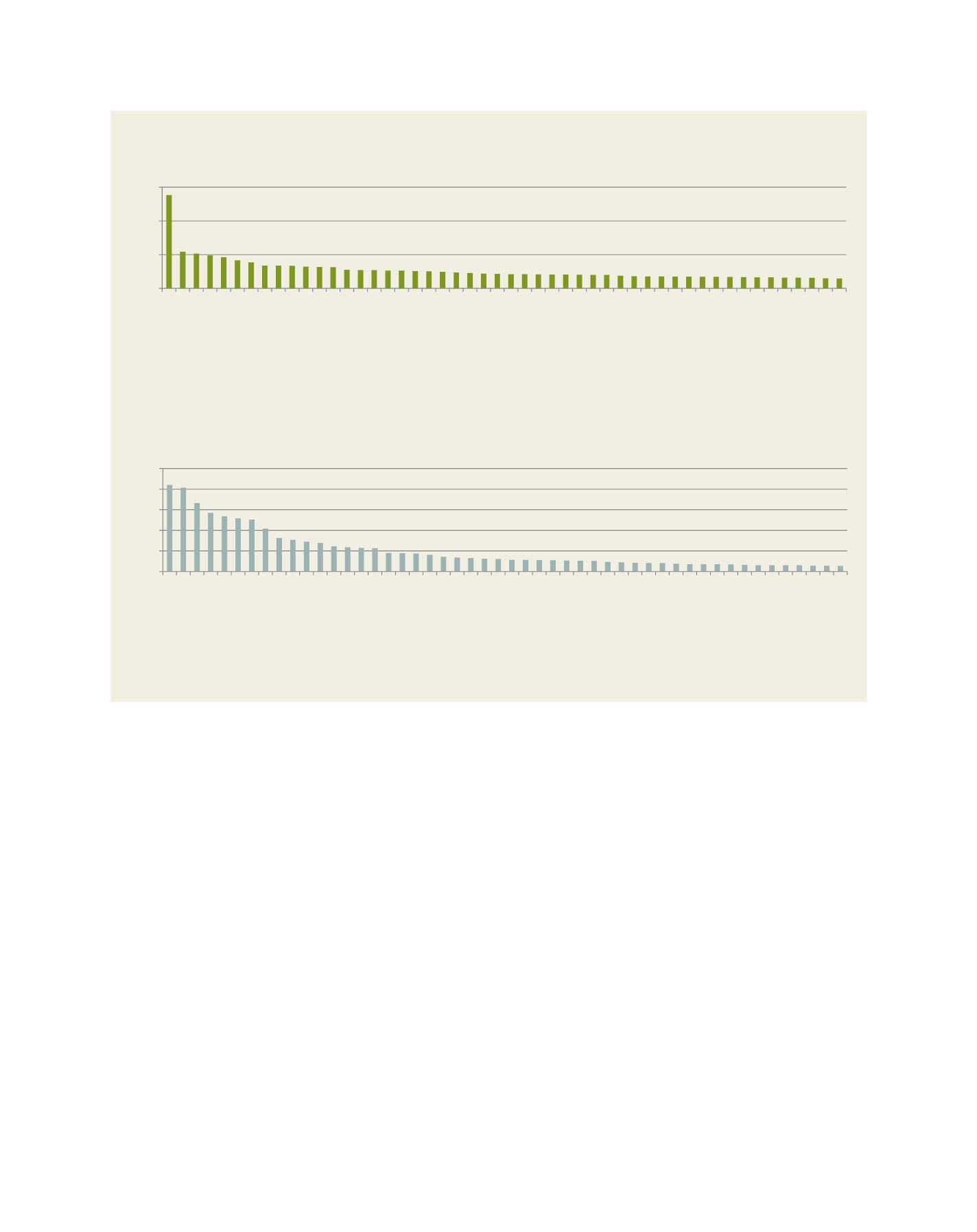

[
] 54
T
ransboundary
W
ater
M
anagement
ments covering 276 international basins, Oregon State
University’s Aaron Wolf and IWMI found that water
cooperation trumps conflict, especially in cases where
institutions have played a strong role.
5
“There’s been a
concern about water wars, but the reality on the ground
is that countries have come up with many, many ways
to cooperate over water,” says Giordano. “The many
ways are not necessarily the theoretically correct ones.”
Wolf described the IWMI project as a great oppor-
tunity to show how cooperation at a local level can
spread upwards: “Given the complexities at the inter-
section of hydrology and politics at even the smallest
scale in this tense setting, IWMI’s work may well help
towards easing tensions around one of the most difficult
hydropolitical problems in the world.”
The Aral Sea region
Water management research in the region has gath-
ered steam since the collapse of the Soviet Union in
1991, with efforts focused on the threatened Aral Sea
and two main rivers leading to it – the Syr Darya and
the Amu Darya.
being strained by climate change, increasing population, expanding
farms and deteriorating water canal infrastructure.
IWMI has been involved in the tributary work since 2007 and
a broader water resource management and agricultural produc-
tivity programme in the Ferghana Valley since 2001. The Swiss
Agency for Development and Cooperation is a key donor. IWMI’s
regional partner is the Scientific Information Center of Inter-State
Commission for Water Coordination.
4
An explosive mix of ethnicities coexists in the basin, predomi-
nantly Kyrgyz, Tajiks and Uzbeks, who rely heavily on agriculture
and livestock. The mountains and plains are dry. The river-fed
valley, often referred to as central Asia’s breadbasket, consumes a
huge amount of water per capita because of inefficiencies and to
irrigate cotton and commodity crops such as wheat. Livelihoods
are therefore vulnerable to water variability. Poverty is high, as is
labour migration, especially to Russia, in part because of the lack of
economic opportunities and services. Water resource management
on a regional scale remains unresolved. The region has been a politi-
cal hotspot, marked by violent inter-ethnic clashes.
However, evidence is growing worldwide that shared water
resources can be the catalyst for cooperation, rather than conflict.
In a review of more than 500 international freshwater agree-
Turkmenistan
Guyana
Iraq
Uzbekistan
Kyrgyz Republic
Tajikistan
United States
Azerbaijan
Canada
Estonia
Kazakhstan
Suriname
Iran, IslamicRep.
Sudan
Uruguay
New Zealand
Pakistan
Ecuador
Timor
-
Leste
Australia
Swaziland
Viet Nam
Armenia
Philippines
SaudiArabia
Egypt, Arab Rep.
Ukraine
Greece
Thailand
SyrianArab Republic
Bulgaria
Argentina
Portugal
Italy
Lithuania
Madagascar
Japan
Spain
Mexico
Myanmar
LaoPDR
Libya
Cuba
Peru
Chile
Netherlands
Sri Lanka
India
Norway
Afghanistan
Water use/capita [m
3
/year]
Kyrgyz Republic
Tajikistan
Madagascar
Uzbekistan
Timor
-
Leste
Afghanistan
Turkmenistan
Pakistan
Iraq
Viet Nam
Guyana
Mali
Nepal
LaoPDR
Sudan
Zimbabwe
India
Mauritania
Niger
Philippines
Bangladesh
Guinea
Moldova
Egypt, Arab Rep.
Armenia
SyrianArab Republic
Ukraine
Swaziland
Eritrea
Ecuador
Sri Lanka
SierraLeone
Azerbaijan
Tanzania
Bhutan
Guinea
-
Bissau
Ethiopia
Cambodia
Haiti
Thailand
Malawi
Senegal
Indonesia
Georgia
Albania
Suriname
Nicaragua
Kazakhstan
Burundi
Morocco
Water use/GDP [m
3
/USD]
0
0
0.5
1
1.5
2
2.5
2000
4000
6000
The world’s top 50 water consuming nations per capita (top) and per produced GDP (bottom)
Source: IWMI. Data: World Bank (2013)


















